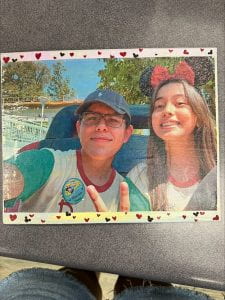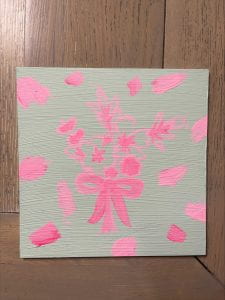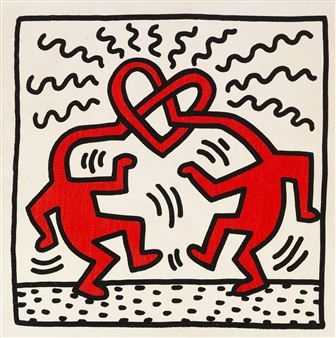career tree
image transfer

inspiration for new work
body image

- My personal opinion of this piece is that I think it is pretty good for very minimal editing. I’m not fully educated on how to use photo editing programs, so I think I really like how it turned out. I like how there is the perfect amount of texture and I also really like how it is in black and white! With that being said, I feel like I successfully edited this photograph. I also had a lot of fun shooting this image for some reason!
- I would have to say that the texture makes the image a success because it isn’t too much texture; it is the perfect amount. I also think the contrast makes it successful because the subject and the background are their own separate thing. the subject isn’t too bright and the background isn’t just black; you can see the two separate things.
- Something that people can think of when judging my work is my experience; I’ve never shot an image like this so this is new to me. Another thing they can think of when judging my work is the visual appeal; does it intrigue the eye? does this look like something you’d want to look at and admire? And lastly, something else to think about is what the intention might be.
- Looking at the work it make me feel intrigued or curious. If this work weren’t mine and if it wasn’t the hand of somebody I know I would feel curious when looking at this piece. This is because I feel like every hand has a story. Every hand has touched, held, or done something different. Yea, we all use our hands for the same functions but every hand has a different story. Some hands have fought in war, some have birthed children, fed their babies, used their hands to provide for a family, clean a home, cook a meal to have dinner on the table, hands to take care of human and fur babies, there are many stories that a hand can tell.
keith haring
my keith haring inspired piece:

favorite piece by keith haring:
This is personally my favorite Keith Haring work of art. I love this piece because I feel like it is communicating to us that true love exists, and how our souls can be tied to another human being. It is showing us how these two people are tied to each other to create love and that they feel loved by the other. The movement around the bodies is to represent the joy each of them have to be around the other. They are meant to be together and that has created for their souls to be tied together. Although the color red can be used to represent danger or blood, it can also represent love, and for this piece I feel like the red is used to represent love. So my interpretation of this piece is that these characters souls are tied to one another because they are meant to be with each other due to the love they have for one another that their souls became one, and that is why this is my favorite piece by Keith Haring.
make a statement

screen-print with mixed media

screen-print

block printing

surrealism

composition
Why do you think composition is important in photography?
- I think composition is important in photography because it grabs the views or attention, or even tell the story behind the photograph.
What draws you in when looking at photography and art?
- For me, personally, what draw me into a photograph are the colors used or based on how aesthetically pleasing it looks at a glance.
Have you been to any museums and where? Did you get inspiration to create art while viewing the work on exhibit?
- I haven’t been to a museum but I have been to an aquarium! I absolutely loved everything about it. I did get inspiration because its not everyday that you see this animals in-person, or are able to touch them. Especially how beautiful the animals looked in the water.
elements of art
online elements of art~
my elements of art~
- What are aperture, shutter speed and ISO?
Aperture: controls the area over which light can enter your camera.
Shutter speed: controls the duration of the exposure.
ISO speed: controls the sensitivity of your camera’s sensor to a given amount of light.
- When would you need to change your ISO?
When shooting in low-light conditions
- What is aperture and shutter priority settings?
Aperture Priority (A) lets you choose the aperture (aka f-stop) setting you want, but the camera chooses the shutter speed. Shutter Priority (S) lets you choose the shutter speed you want, but the camera chooses the aperture setting.
- What are AF modes how do you change them?
Autofocus (AF) is the function of a camera to automatically focus on a subject. To select an AF mode, press the AF· Drive Button, then turn the Main Dial until the mode of your choice appears on the LCD panel on top of the camera.
- Why do your need to meter the light to get the right exposure?
Incident light metering will give you consistently correct exposure results, because it won’t be fooled by subject reflectivity.
- What is white balance and why would you need to change it?
White balance is used to adjust colors to match the color of the light source so that white objects appear white. White balance is important because, without it, colors in your images will take on warm or cool tones that you may not notice while photographing.
- What is depth of field and what is the difference between shallow and good?
Depth of field is the area of acceptable sharpness in front of and behind the subject which the lens is focused. A shallow depth of field refers to a small area in focus. A deep depth of field captures a larger area in focus, often keeping everything in the image sharp and clear.
- What are drive modes and metering modes?
Drive Modes are the shooting modes in your camera, such as single shooting (where one image is taken at a time), continuous shooting, self-timer mode and more. The metering mode refers to the way in which a camera determines exposure.
- What is exposure compensation?
Exposure compensation is a technique for adjusting the exposure indicated by a photographic exposure meter, in consideration of factors that may cause the indicated exposure to result in a less-than-optimal image.























